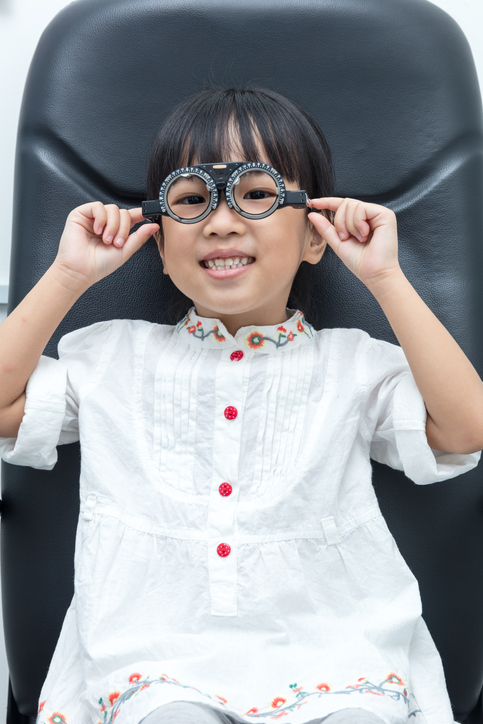 |
| Girls were found to have shorter axial length but steeper corneal curvature and higher rates of myopia. Photo: Getty Images. Click image to enlarge. |
Measuring ocular parameters such as axial length (AL) and corneal curvature can help identify children at risk for myopia, the most common cause of distance visual impairment that is quickly increasing in prevalence throughout the world. To create a resource for estimating myopia probability in youth, the team leading this large China-based study developed age- and gender-specific percentile charts for AL and AL/corneal radius of curvature (CR) and found the data to be an excellent tool in screening for and identifying myopia.
The retrospective analysis included 14,127 participants between ages four and 18 from three Chinese studies. Researchers examined data for AL, cycloplegic spherical equivalent (SE) and corneal curvature. AL and AL/CR percentiles were estimated and logistic regression was used to model myopia risk based on age, gender, AL and AL/CR percentiles. Accuracy was estimated using a validation sample including 5,742 children.
The following weighted mean averages were calculated: SE of -0.76D (+9.00D to -13.00D), AL of 23.7mm (18.3mm to 30.4mm), corneal curvature of 7.85mm (7.05mm to 9.48mm) and AL/CR ratio of 3.03 (2.49 to 3.88).
As expected, an increase in AL correlated with increasing age and a myopic shift in refractive error. Corneal curvature, on the other hand, had little variation between age groups. The analysis also revealed that AL/CR values increased with age, and for all but percentiles <10, this change was year-to-year. The average age of myopia onset for the study group was 10, after which prevalence significantly increased.
The data showed that females tend to have a shorter AL, steeper corneal curvature, slightly lower AL/CR ratio and more myopic refractive error. “For example, in females vs. males, at an AL of 24mm, the SE was -1.47D vs. -0.26D, and for an AL/CR value of three, the mean SE was -0.13D vs 0.15D, respectively,” the study authors wrote. They noted that these differences were more apparent from the onset of myopia. However, the authors did speculate about this finding.
“Although the relatively steeper corneas in females result in a more myopic refractive error, the smaller AL would in theory compensate for this myopic shift,” the study authors wrote. “Therefore, the more myopic error may be indicative of an AL that has elongated past the length required for emmetropia, or other optical components such as the crystalline lens might be playing a role. There are reports of higher crystalline lens power in females.”
Age- and gender-specific AL and AL/CR percentile charts can aid in monitoring patient changes over time to estimate myopia probability. Keeping an eye on patient risk and progression of myopia is essential in making informed and timely treatment decisions to improve visual outcomes.
He X, Sankaridurg P, Naduvilath T, et al. Normative data and percentile curves for axial length and axial length/corneal curvature in Chinese children and adolescents aged 4-18 years. Br J Ophthalmol. September 16, 2021. [Epub ahead of print]. |


